Introduction
In the rapidly evolving landscape of banking, automation is not just a trend but a necessity that drives operational efficiency and enhances customer experience. By streamlining repetitive tasks, reducing human error, and accelerating transaction processing, automation is transforming the way banks operate. This transformation is backed by technological advancements and changing consumer habits, pushing banks to adopt new technologies that ensure high levels of security and compliance.
Institutions like M&T Bank and Capital One exemplify the benefits of automation. M&T Bank’s implementation of Clean Code standards has significantly reduced application maintenance time, while Capital One’s transition to the cloud has fostered a culture of collaboration and innovation. These examples highlight how automation can lead to substantial productivity improvements, as evidenced by Accenture’s analysis, which indicates that 73% of time spent by US bank employees could be impacted by generative AI.
Moreover, the deployment of industrial robots and automation tools extends beyond efficiency, contributing to cost reduction and optimal resource allocation. As the financial sector continues to embrace these advancements, the potential for automation to enhance profitability and competitive positioning becomes increasingly evident.
Benefits of Automation in Banking
Automation in banking significantly reshapes operational efficiency by streamlining repetitive tasks, reducing human error, and accelerating transaction processing. This rapid transformation is driven by changing consumer habits, competitive pressures, and technological advancements. The trend towards an all-digital customer experience is causing rapid adoption of new technologies, ensuring the highest levels of security and compliance with stringent regulatory requirements.
Take, for instance, M&T Bank, a 165-year-old institution that has embraced automation to support maintainability and performance of its software. By establishing Clean Code standards across its development teams, the financial institution minimized application maintenance time and costs while ensuring software efficiency, reliability, and security. This approach not only enhances service delivery but also allows the institution to respond promptly to customer needs.
Likewise, Capital One’s full shift to the cloud shows how mechanization can promote a cooperative company culture. Over 50,000 employees utilize Slack each week to streamline tasks and encourage change throughout all divisions, highlighting the organization’s dedication to innovation and operational excellence.
The effect of mechanization is considerable, with Accenture’s analysis suggesting that 73% of time utilized by US bank employees could be influenced by generative AI—39% via mechanization and 34% through enhancement. This potential for productivity enhancement highlights the significance of mechanization in competitive market settings.
Moreover, as highlighted by the International Federation of Robotics, the deployment of industrial robots has surged, with around 3.5 million units worldwide. This trend is mirrored in the banking sector, where automation’s role extends beyond efficiency to include cost reduction by minimizing manual labor and optimizing resource allocation. Ultimately, this enhances profitability and positions banks to thrive in a competitive market.
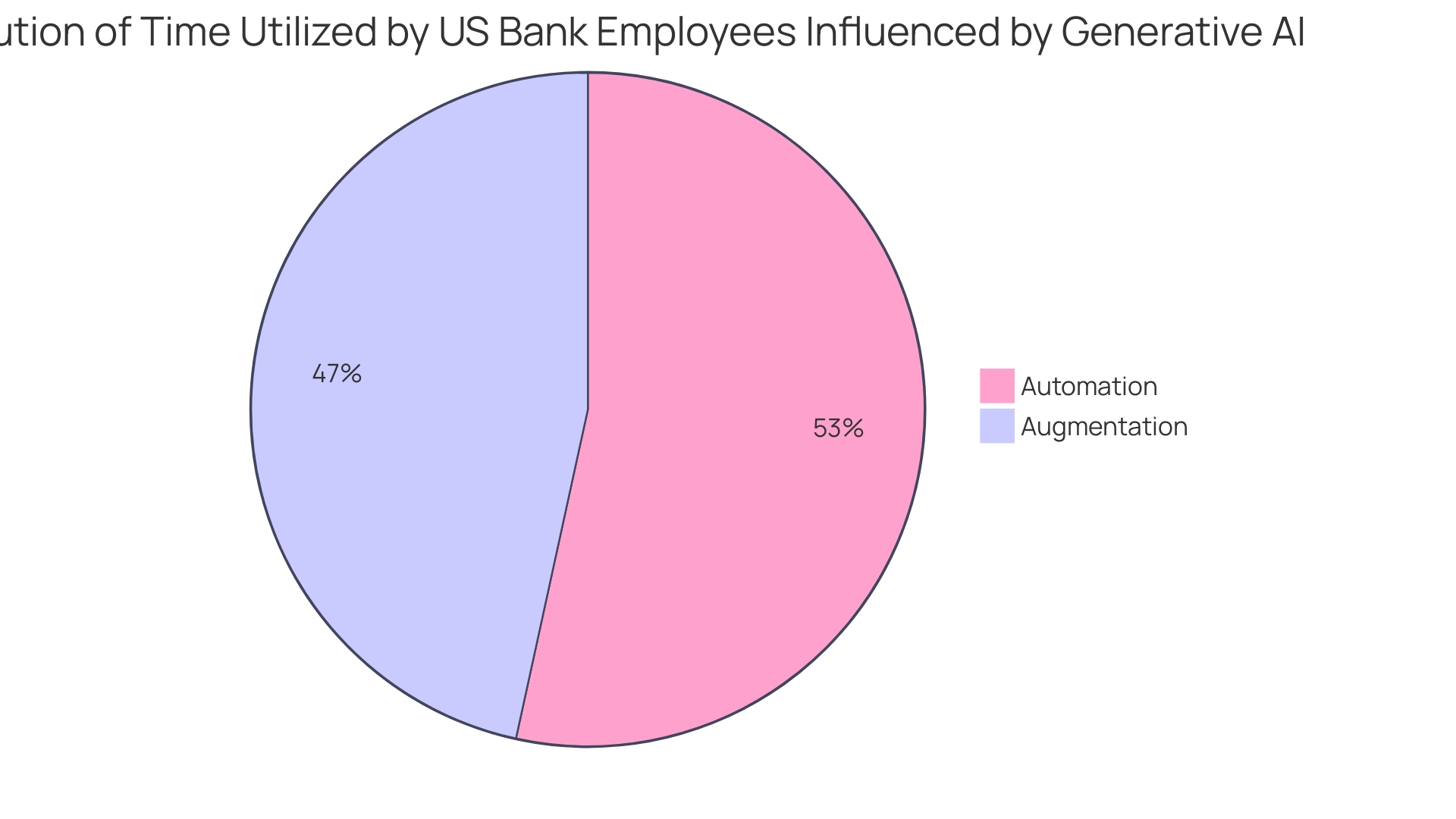
Key Automation Techniques in Banking
Automation in the banking sector has significantly evolved with the implementation of various sophisticated technologies. Robotic Process Automation (RPA) stands out by handling high-volume tasks such as data entry, transaction processing, and account reconciliation. These software robots replicate human actions across different systems, streamlining operations and reducing manual effort.
Intelligent Document Processing (IDP) leverages artificial intelligence (AI) and machine learning (ML) to manage unstructured data efficiently. It includes key functionalities like Optical Character Recognition (OCR) for converting images to text, and data extraction for retrieving specific information from documents. This technology is invaluable in processing loan applications, insurance claims, and other document-heavy workflows, enhancing accuracy and speed.
Automated Relationship Management (CRM) systems also play a crucial role by refining interactions with clients. By utilizing AI, these systems offer tailored assistance and prompt follow-ups, resulting in enhanced client satisfaction and loyalty. As one industry expert noted, integrating tools like Tungsten solutions into mobile apps allows users to access necessary services anytime and anywhere, thereby boosting engagement and retention.
These advancements highlight the transformative effect of mechanization in the financial sector, offering streamlined processes, enhanced accuracy, and superior customer experiences.
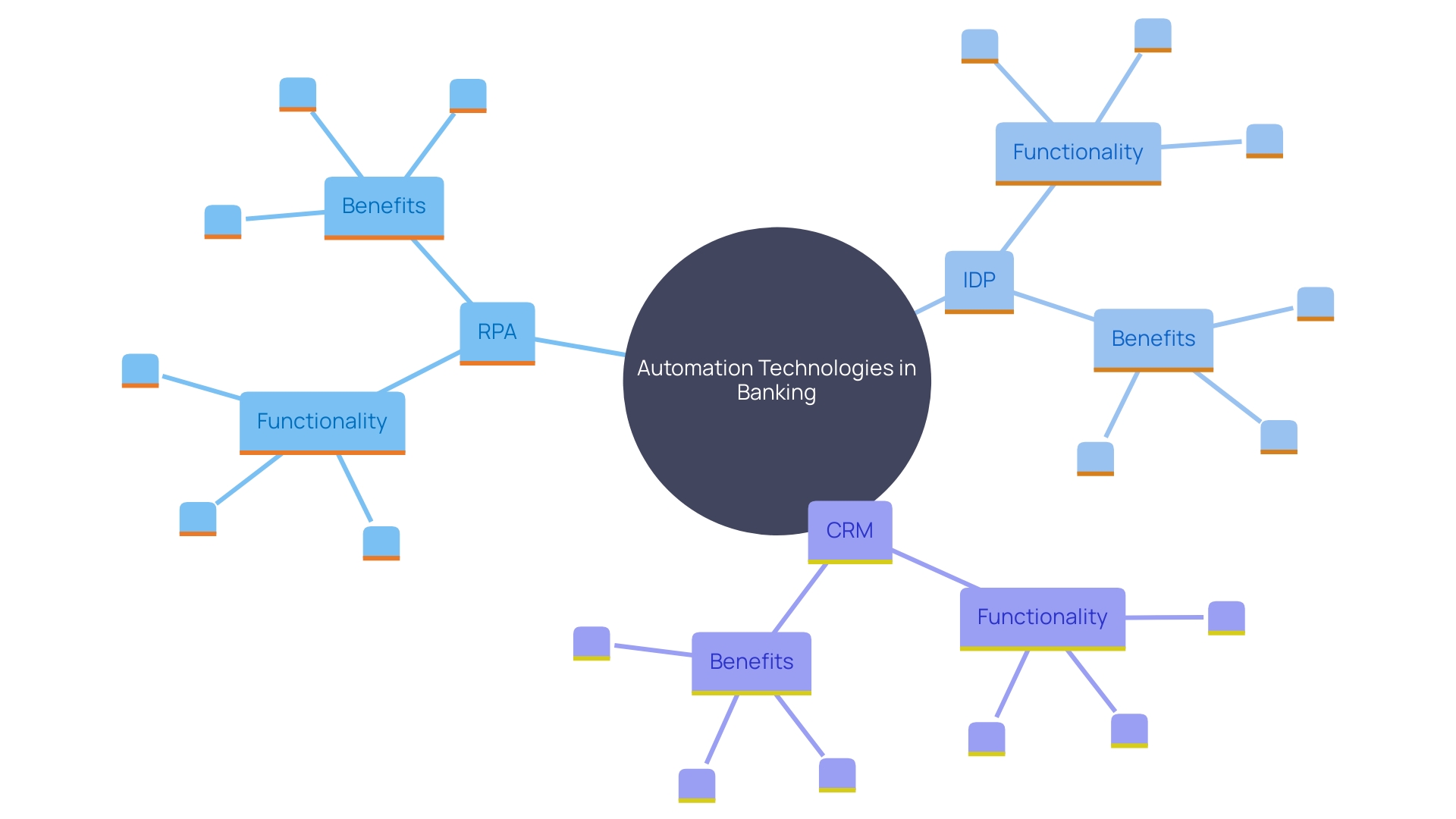
Streamlining Financial Processes with Automation
Automation is revolutionizing financial processes such as loan approvals, account management, and compliance reporting, leading to significant efficiency gains. By integrating automated workflows, banks can drastically cut down processing times and enhance accuracy. For instance, TBC Bank in Georgia, which aims to improve its time-to-market for digital products, leverages automation to provide an extraordinary banking experience. Automated loan processing systems can assess creditworthiness in real-time, expediting approvals and boosting customer satisfaction. M&T Bank, a major U.S. commercial bank, highlights the importance of maintaining stringent regulatory compliance through automated reporting, significantly reducing the risk of human error and ensuring data security. As AI and machine learning become more pervasive, the potential for automation in financial operations is vast, with up to 80% of these tasks being automatable. This not only frees up employee time for strategic initiatives but also enhances overall operational efficiency.
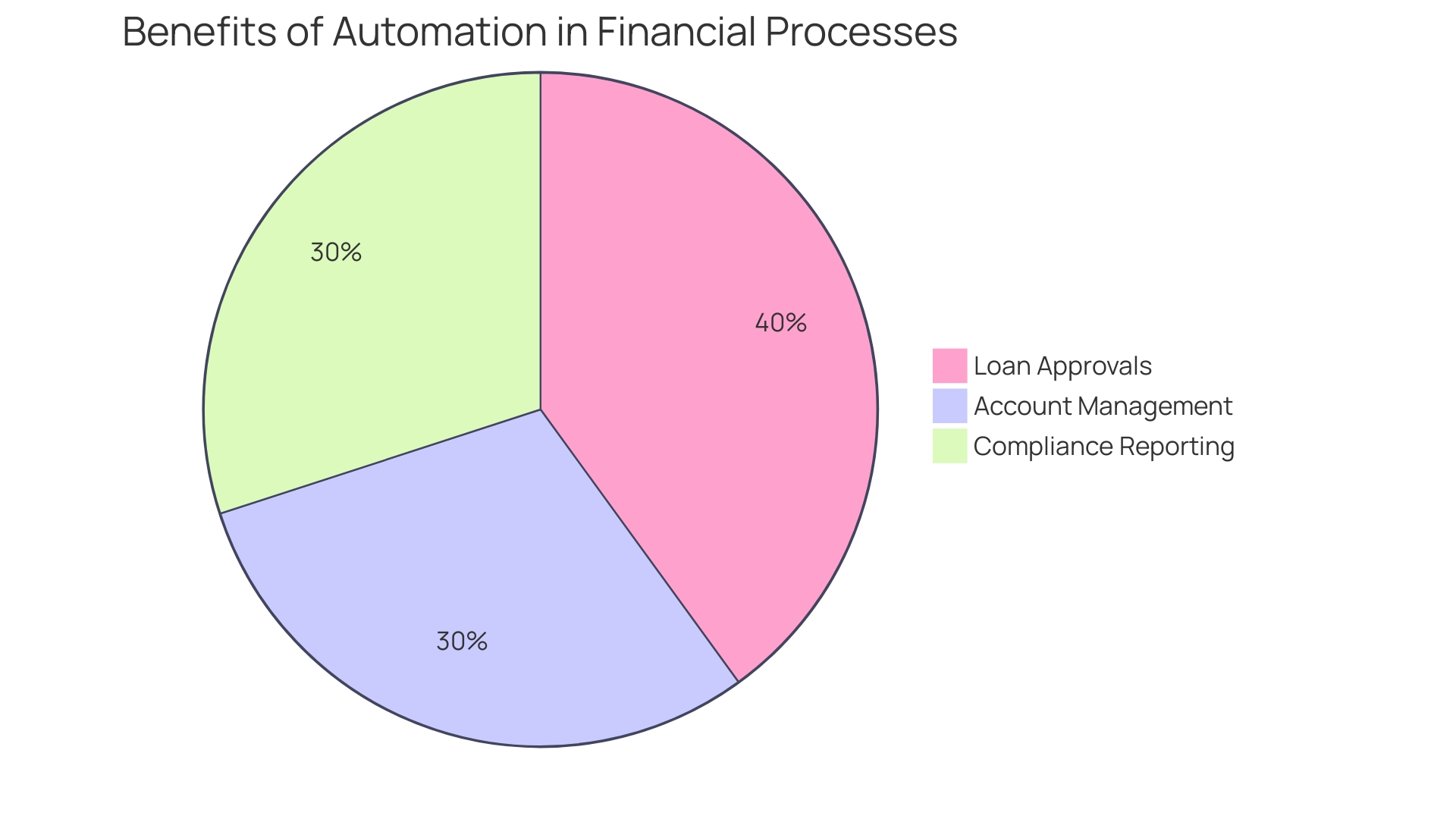
Enhancing Customer Service through Automation
Automation in customer support within the banking sector is transforming the manner in which financial institutions engage with their clients. By leveraging advanced tools such as chatbots and virtual assistants, banks can offer round-the-clock support, addressing queries and resolving issues without the need for human intervention. This not only improves response times but also guarantees a consistent level of support.
For instance, Capital One’s digital transformation efforts, including their use of Slack to streamline and automate workflows, have set a benchmark in the industry. ‘With more than 50,000 staff members working together on this platform, Capital One has nurtured a culture of innovation that reaches its client support operations.’. Their chatbot, Eno, demonstrates how automation can provide personalized interactions by analyzing data and customizing offerings to individual preferences.
Similarly, ING’s partnership with McKinsey to develop a generative AI-driven chatbot has shown significant results. In the Netherlands, ING’s chatbot handles 40-45% of inquiries, significantly reducing the need for live agent intervention. This method not only fulfills client requirements more effectively but also enables the bank to expand its assistance capabilities across various markets.
The incorporation of AI in client support is becoming increasingly common. A report by 8×8 shows that contact centers are on the verge of a new era with conversational AI, which promises to provide the convenience and consistency that clients require. More than 63% of retail firms have already incorporated AI into their support strategies, with many seeing enhanced efficiency and savings in expenses.
However, it’s important to recognize the challenges that come with implementing AI, such as high initial costs and data privacy concerns. Regardless of these obstacles, the possible advantages of AI in improving client support are undeniable. As JPMorgan Chase’s recent introduction of their LLM Suite demonstrates, AI can significantly augment traditional roles, providing faster and more precise responses to client needs.
Ultimately, the push towards automation in banking is driven by the need to meet growing client expectations for immediate and reliable service. As more financial institutions utilize AI-driven tools, the sector is set to provide more effective, tailored, and high-caliber customer interactions.
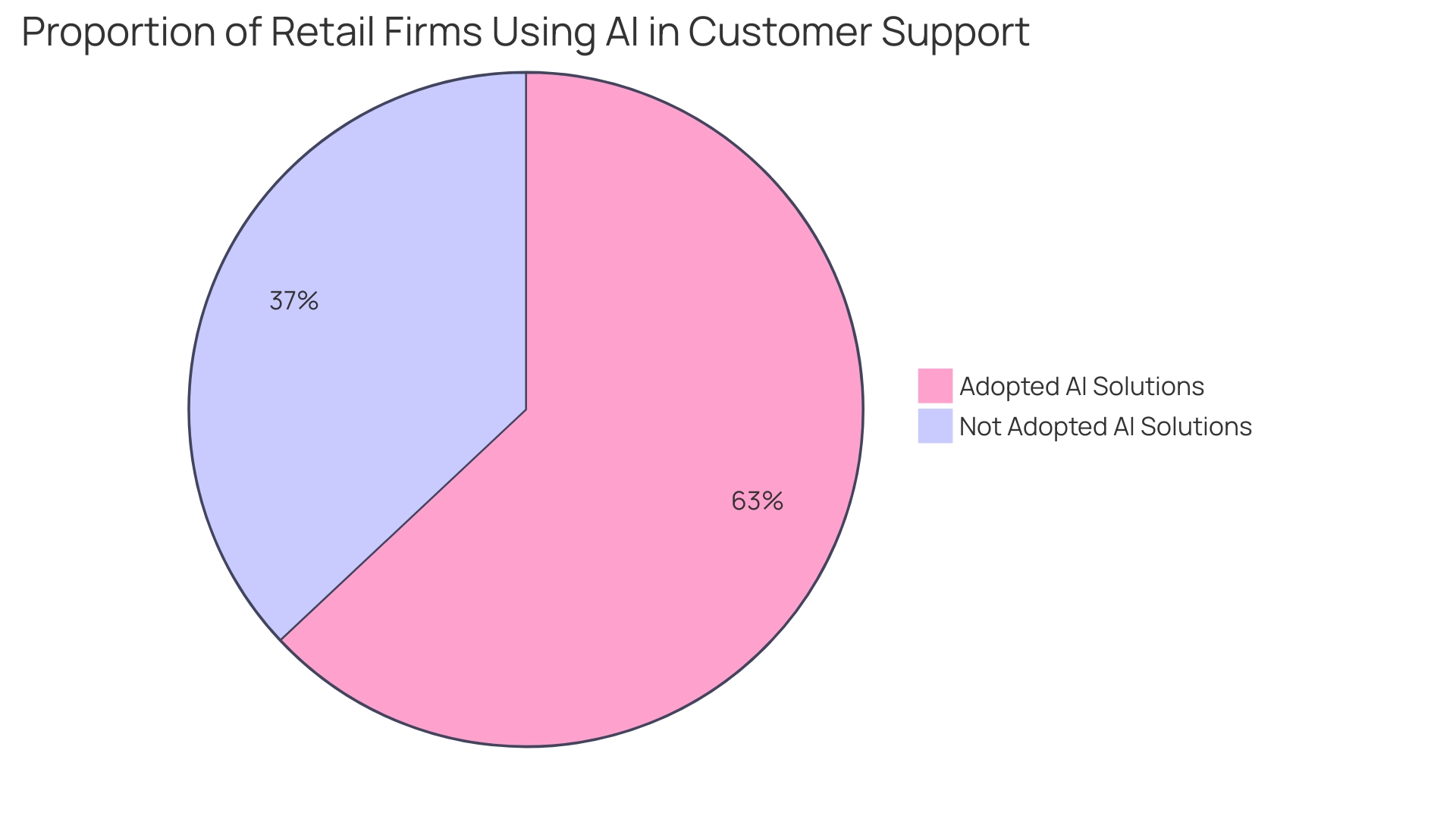
Improving Operational Efficiency and Compliance
Operational efficiency in banking is crucial for maintaining competitiveness. Automation not only streamlines processes but also integrates compliance checks into workflows, ensuring adherence to regulatory standards. By automating compliance processes, financial institutions can mitigate risks associated with manual oversight and maintain accurate records, which are essential for audits and regulatory reporting.
A prime example of this is TBC Bank in Georgia, which has successfully utilized technology to enhance its operational efficiency and improve its digital product time-to-market. This move aligns with the institution’s mission to make people’s lives easier and provide an extraordinary financial experience.
Similarly, M&T Bank has recognized the need for stringent regulatory compliance in the face of rapid digital transformation. By implementing Clean Code standards, M&T Bank ensures that its software maintains high quality and compliance, thereby reducing the risk of security breaches and financial losses.
The importance of mechanization in the financial sector is highlighted by the potential productivity enhancement for early adopters. Accenture’s analysis indicates that 73% of the time spent by US financial institution employees could be influenced by generative AI, with 39% impacted by mechanization and 34% by enhancement. This underscores the extensive advantages of mechanization across different banking positions, from the C-suite to frontline service.
Moreover, the recent MoveIt breaches impacting 60 financial institutions, including Flagstar, underscore the importance of robust automated compliance systems. These breaches have prompted banks to take immediate action to address vulnerabilities and safeguard sensitive information, demonstrating the essential role of technology in enhancing operational resilience.
In conclusion, as the global financial sector grows more intricate and linked, the implementation of automated processes is crucial for ensuring compliance, reducing risks, and enhancing overall operational efficiency.
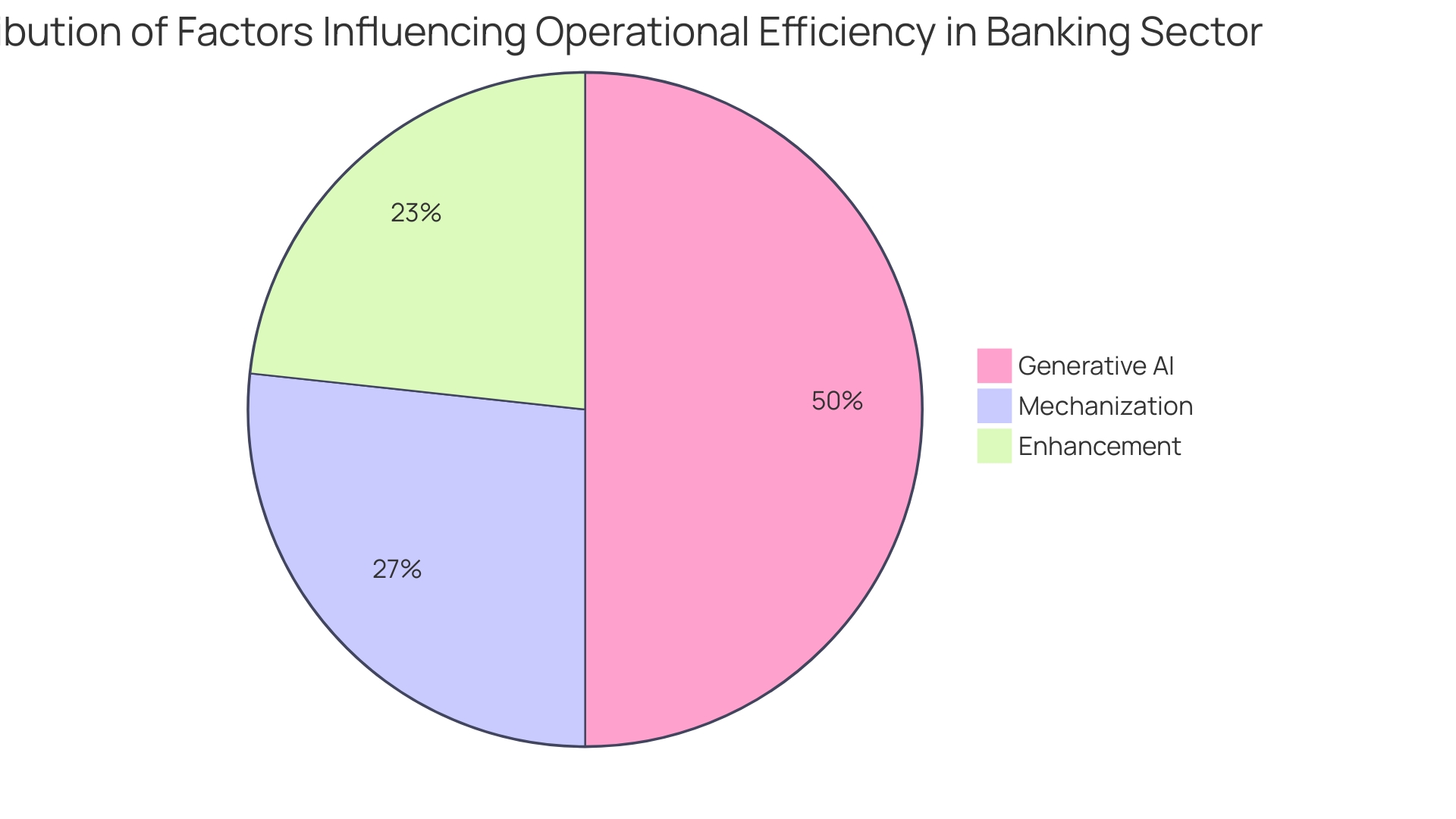
Best Practices for Implementing Banking Automation
Attaining effective mechanization in banking requires a carefully planned approach. The journey starts with a thorough evaluation of existing procedures to identify opportunities for mechanization. Engaging stakeholders throughout the implementation phase ensures buy-in and smooth transitions. Training staff is crucial, as they need to adapt to new technologies and workflows effectively.
Choosing the right technology partners is equally important. For instance, TBC Bank in Georgia has significantly enhanced its digital product offerings and customer experience by partnering with cutting-edge technology providers. This collaboration has allowed them to innovate continuously and maintain a competitive edge.
Moreover, continuous monitoring and evaluation of automated solutions are vital. M&T Bank, a leading U.S. financial institution, exemplifies this by adhering to stringent Clean Code standards. This practice not only ensures high-quality software but also maintains compliance, thereby mitigating risks associated with digital transformation.
Based on Accenture’s findings, mechanization has the capacity to influence 73% of duties carried out by financial institution staff, with 39% being entirely mechanized. This highlights the transformative power of mechanization in enhancing productivity and operational efficiency. By adhering to these optimal methods, banks can maneuver through the intricacies of mechanization and reveal significant benefits for both their clients and staff.
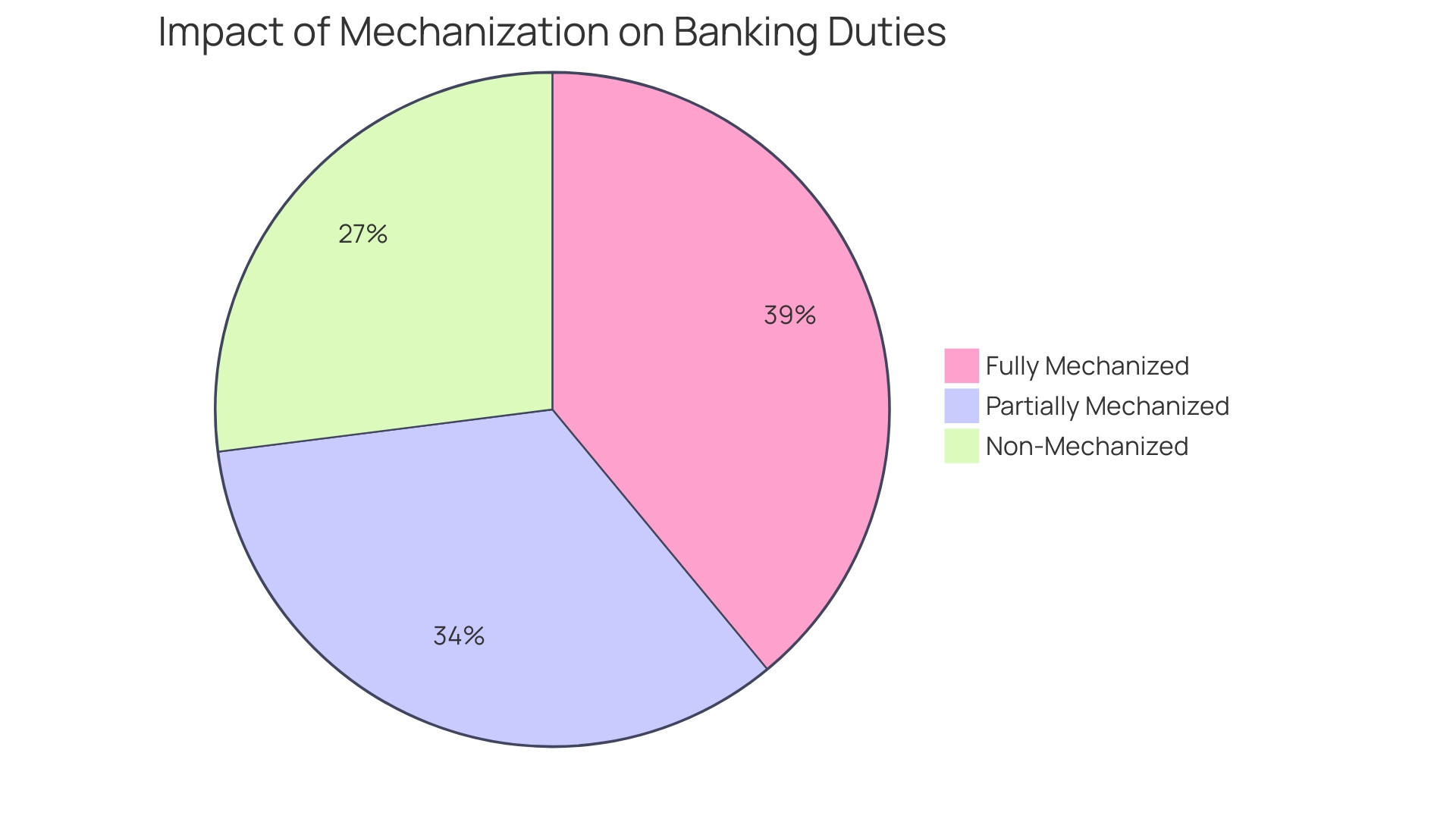
Future of Banking Automation and Its Impact
The future of banking automation is set for unprecedented growth with the incorporation of artificial intelligence (AI), machine learning, and blockchain technologies. These advancements are not just enhancing operational efficiency but also transforming customer experience. Banks like Capital One have already demonstrated the potential of going all-in on cloud technology, fostering a culture of innovation and digital transformation across various departments. This move has enabled them to offer more sophisticated services and maintain a competitive edge.
Additionally, initiatives like Appli are revolutionizing the lending process by integrating AI models that provide real-time feedback and Educational Insights to consumers. This helps both underbanked individuals and financial institutions make informed decisions, reducing application fears and streamlining processes.
The banking sector must ensure the highest quality and compliance of the software it deploys to avoid security breaches and financial losses. M&T Bank’s establishment of organization-wide Clean Code standards exemplifies the industry’s commitment to maintaining robust and reliable operations.
With the rapid industrialization and technological advancements in regions like Asia-Pacific, the integration of AI and blockchain is expected to grow swiftly, driven by supportive government policies and a large pool of skilled labor. This global trend underscores the urgency for traditional financial institutions to adapt and innovate to stay relevant in this evolving landscape.
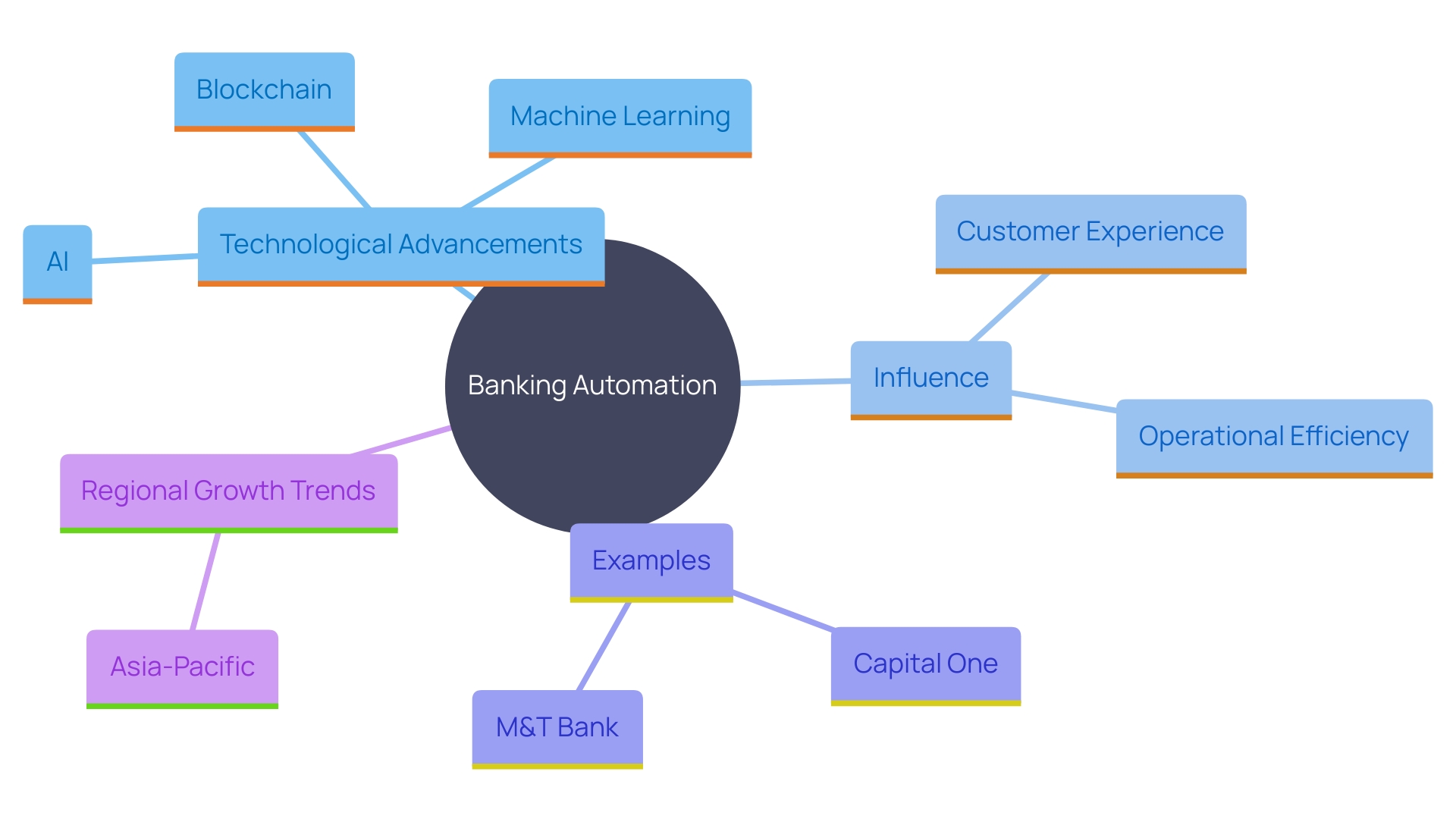
Conclusion
The adoption of automation in banking represents a significant shift towards enhanced operational efficiency and improved customer experiences. By streamlining repetitive tasks and minimizing human error, banks can not only accelerate transaction processing but also respond more effectively to the evolving needs of their customers. Institutions like M&T Bank and Capital One serve as prime examples, demonstrating how automation can lead to substantial productivity improvements and foster a culture of innovation.
Moreover, the integration of advanced technologies such as Robotic Process Automation (RPA) and Intelligent Document Processing (IDP) showcases the transformative impact of automation on financial workflows. These tools not only enhance accuracy but also free up valuable employee time for strategic initiatives, ultimately driving profitability and competitive positioning in a rapidly changing market.
As banks continue to embrace automation, it is crucial to implement best practices that ensure successful integration. Engaging stakeholders, continuous training, and choosing the right technology partners are essential steps in this journey. Additionally, the ongoing evaluation of automated solutions is vital for maintaining high standards of quality and compliance, safeguarding against potential risks.
Looking ahead, the future of banking automation is poised for remarkable growth, fueled by advancements in AI, machine learning, and blockchain technologies. As institutions adapt to these innovations, the potential for delivering exceptional customer service and operational excellence will only expand. Embracing automation is not merely an option; it is a necessity for banks aiming to thrive in an increasingly competitive landscape.

